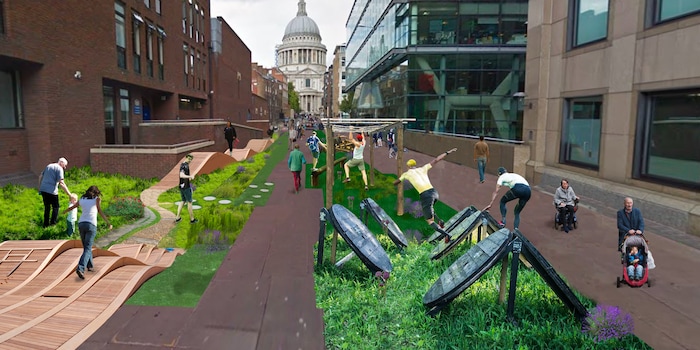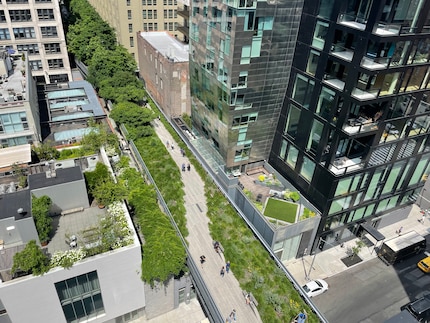
Background information
You’re not as good at multitasking as you think
by Patrick Vogt

Architecture can move us. Some concepts for «Active Cities» have already been implemented, others are promising ideas – and pedestrians would welcome them, as a study shows.
Exercising has to be enjoyable. Period. If you don’t like to exercise, you won’t do it often enough. But it’s not always our laziness that keeps us from getting active. In some places, the surroundings make it incredibly difficult for people to go for a run around the block or get to work in any other way than sitting down. Inviting footpaths encourage more people to use them. That’s been proven and isn’t surprising.
If we don’t have to walk on a narrow footpath next to a four-lane main road, but can stroll through a park or along wide paths, we’re more likely to do so. And we improve our health along the way. The World Health Organisation (WHO) recommends at least 150 minutes of moderate exercise per week for adults. This would be easier to achieve if our surroundings weren’t only attractive for cars or trains.

In addition to footpaths, parks and sports fields, there are other ways to gently nudge people towards more physical activity. «Nudging» is the keyword. After all, we don’t want to be ordered, but encouraged to get active. What could that look like? A study published in the journal «Landscape Research» investigated just that.
The researchers and lead author Anna Boldina from the University of Cambridge showed 595 people in Britain everyday situations with differently designed paths and asked them which one they’d choose. The pictures looked a bit like the header image above, which shows London’s Sermon Lane with animated obstacles. The researchers then changed the paths and parks, added shortcuts, figures that narrowed the passage or balancing paths over water, and wanted to know what effect each of these adjustments had. They also asked participants to assess whether they were confident they could navigate the paths and how difficult or dangerous they considered them to be.
While new bike routes, urban sports facilities or other infrastructure often appeal to people who are more active already, this study aimed at finding out if adults could be encouraged to choose a more challenging route over a conventional one – getting some exercise along the way. The answer? Yes! At least on paper.
Depending on the level of difficulty, 14 to 78 per cent of participants said they’d take on a small obstacle course and face challenges such as balancing beams, stones in a pond or extra-high steps. All age groups expressed openness to this, as long as the course seemed manageable. So they could be encouraged to exercise more – provided that cities looked a bit more like children’s playgrounds instead of concrete deserts.
Transforming everyday places could help change people’s behaviour. Some sports offers already exist: «Active City» in Switzerland, for instance, or the «Active Well-being Initiative». The latter has contributed to the fact that, today, 50 instead of 30 per cent of people in Liverpool are at least sufficiently active.
Combined with cities and parks that are designed to encourage activity, this could make even more people get moving. As the survey in the study shows, people can be motivated – especially when the path offers a reward and doesn’t seem dangerous, for example, by promising a beautiful view or simply because it’s a shortcut. What’s good news is that how much distance is saved doesn’t seem to play a major role in terms of people’s motivation.
Cities need simple paths that are versatile and not too tiring for anyone. Paths that are accessible to older people or people in wheelchairs and also offer small exercise challenges at different levels. These challenges need to feel more like an invitation and less like a call to finally get active, as a couple of pieces of fitness equipment in a park might.
In this «Choice Architecture», many factors can contribute to whether people actually take new paths. Some examples are handrails that promise more safety, lighting or route guidance that suggests «this way». This is important because people like to be guided by others. In other words, if one person is balancing on a log, the next two or three will quickly follow. In any case, seeing the pictures of others doing something made participants more eager to try it out themselves. Having said that, they didn’t actually have to take action, they just had to give their assessment. Probably sitting down.
Header image: Anna Boldina/CC BY 4.0
Simple writer and dad of two who likes to be on the move, wading through everyday family life. Juggling several balls, I'll occasionally drop one. It could be a ball, or a remark. Or both.
Interesting facts about products, behind-the-scenes looks at manufacturers and deep-dives on interesting people.
Show all